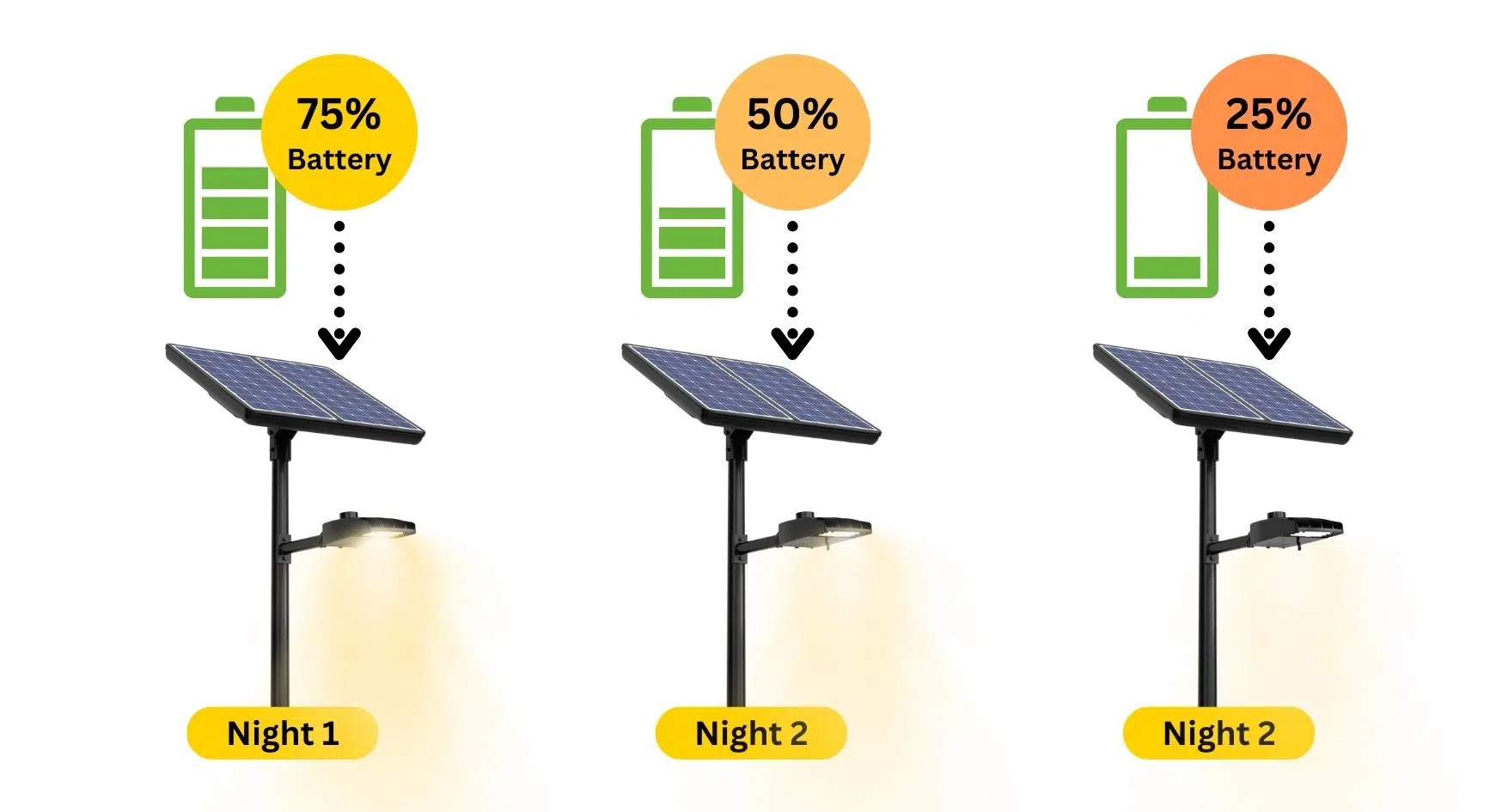Do solar lights charge on cloudy days?
If you look up the word "solar" in a dictionary, you'll find definitions like "related to or derived from the sun," and "using the sun's energy, especially to generate electricity." It's pretty straightforward—solar technology is all about the sun.
But here's the question: do solar lights really need direct sunlight to work? And what happens when it's cloudy or overcast? These are common concerns, and the answer is simpler than you might think.
Solar panels can still absorb energy on cloudy days, even if the output is reduced. As long as your system has enough battery storage to handle low-light periods, your solar lights should continue working without issues. Proper system design is key. Let us help you get it right!
How Do Solar Panels Work?
Solar panels convert sunlight into electricity using photovoltaic (PV) cells. When light hits these cells, it creates an electric current that can be stored in batteries for later use. This process works even when the sun isn’t shining directly, though the efficiency drops on overcast days.
On sunny days, your panels collect plenty of energy, which is then stored in batteries. But on cloudy days, the amount of available sunlight decreases, so less energy is generated. However, this doesn’t mean your lights will stop working entirely.
The battery still charges, just not to full capacity. In regions with frequent cloud cover, it’s important to plan ahead to ensure your system can handle extended periods of low sunlight.
Preparing for Cloudy Days
To keep your solar lighting running smoothly, consider the size and number of solar panels. Larger panels capture more sunlight, which means more energy stored for later use. Think of it like using a bigger bucket to catch rainwater—it holds more.
Also, make sure your panels are positioned correctly. In the northern hemisphere, they should face south; in the southern hemisphere, north. The tilt angle also matters. At the equator, flat panels work well, but as you move away, you’ll need to adjust the angle to maximize sun exposure.
There are tools online, like the World Global Star Atlas, that can help you calculate the best tilt angle for your location. If you're unsure, we’re always here to help.
Adding Backup Power
If you live in a place with frequent clouds, such as Portland, Oregon, you’ll want to invest in higher-capacity batteries. Even on cloudy days, your panels charge, but not fully. Without enough backup power, your lights may dim or turn off during extended periods of poor weather.
For example, if your battery only reaches 75% charge on a rainy day, it might last one night. If the next day is also cloudy, it could drop to 50%, and so on. That’s why having extra storage is essential for reliable performance.
Backup power ensures you have energy ready when the sun isn’t cooperating. Don’t let cloudy days disrupt your lighting needs. Choose a system with sufficient battery capacity and proper solar sizing.
Whether you're looking for residential, commercial, or industrial solar lighting solutions, we can help you design a system that works reliably, no matter the weather. Contact our team today to discuss your project and see how solar can work for you—even on the cloudiest days.
Contact us
Organic Intermedaites,Syntheses Material Intermediates,Pharmaceutical Intermediates,Agrochemical Intermediates
Jiangyin Lanyu Chemical Co.,Ltd. , https://www.lanyu-chem.com
